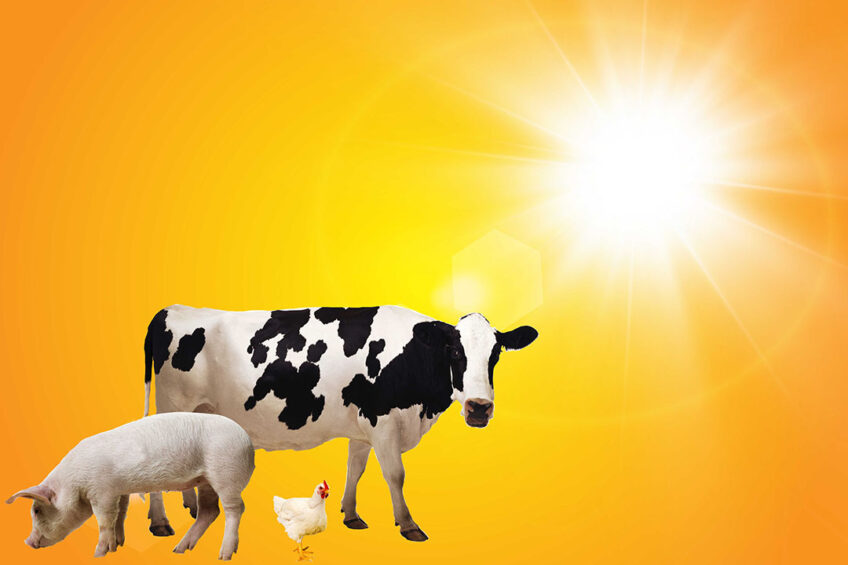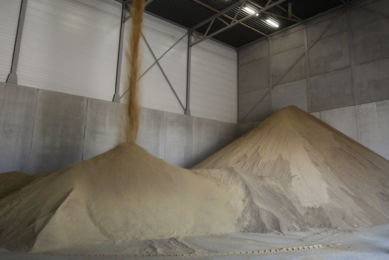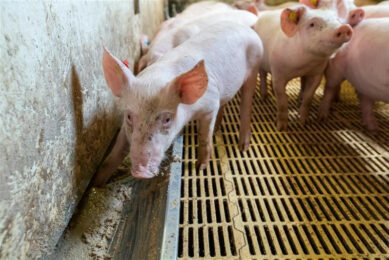Prevention better than cure to cope with heat stress

Heat stress (HS) is one of the major stressors encountered by farm animals. When livestock are subjected to this environmental stress, it can be detrimental to health, well-being and performance, and if severe enough even death. Setting up multiple strategies before HS strikes is the key.
Many of the consequences of HS are readily apparent on-farm, especially in swine, cattle and poultry. Several aspects are affected such as feed intake and feeding pattern in all these species; in fact, heat-stressed animals normally reduce their feed intake leading to negative energy balance and loss of body condition. Another important effect relies on a reduced milk production in mammals; lactation is a period of high metabolic load that sensitizes individuals to environmental temperature. Reproductive problems derived from HS exposure during gestation and lactation stages are also reported. Furthermore, negative impacts on carcass, meat, milk and egg quality traits are well described. And, the last but not least, there are long-lasting effects on reproductive animals and in their offspring. Aforementioned points result in a substantial economic loss on the animal production industry worldwide.
Strategies to tackle heat stress
HS can be mitigated on-farm using different approaches, such as, investing in equipment to contribute to environmental control, through management and/or applying nutritional strategies. These strategies are present in all farmed species with sensitivity to heat stress and widely described. In this article, the emphasis will be on strategies directed towards the individual, taking into consideration two main aspects: modulation of feeding behaviour and physiological stabilisation of the animal. It is important to highlight that this last group of strategies should be implemented before HS occurs, with the aim to help the animal to become more resilient to it, and additionally, also during HS circumstances, in this case to support homeostasis in this challenging period.
Physiological consequences
A physiologically relevant increase in temperature has the potential to change the feeding pattern of the animal due to a metabolic heat produced by digestion and absorption processes, this leads to reduced feed intake and nutrient absorption too. Moreover, during HS, blood flow is diverted from the intestine to the periphery, which results in hypoxia of the intestinal epithelial cells. The lower irrigation of the intestine plus the lower nutrient uptake compromise the intestinal integrity and barrier function, allowing for an influx of noxious compounds and pathogenic microbes from the intestine to the systemic circulation. Consequently, heat induced intestinal permeability is associated with increased blood markers of endotoxemia, hypoxia, and inflammation; all of which may contribute to multi-organ failure syndrome. So, one of the major organs affected by HS is the gastrointestinal tract and associated organs (e.g. liver).
Figure 1 – Effect of a feed additive in a sow’s diet on lactation intake during summer in Arkansas (LSMeans, Kg/sow and day).

Focus on feeding behaviour
For this reason, strategies focused on eating behaviour, with the potential of improving feed efficiency, and others more centred in the reduction of the inflammatory status and oxidative stress responses, are complementary to other strategies based on the environment (e.g. coolings), management (e.g. avoiding movements of animals in the midday) and nutrition (e.g. adding higher levels of vitamin E and Selenium).
Therefore, strategies focused on keeping a good level of feed intake are crucial. In cattle and swine, the use of certain feed additives could have an effect on their eating behaviour thanks to their potential of inducing endocrine signalling (e.g. CCK, GLP-1), which help the animal to keep intake and modulate the feeding pattern (e.g. increasing the number of meals, reducing the meal size) independently of the environmental conditions (Figure 1). The implementation of these additives in advance is a useful strategy to prevent the immediate drop in feed intake and its direct consequences due to HS conditions, which should be maintained along the whole challenging period.
Figure 2 – Heat Stress consequences at the gut level according to the application of strategies that stabilise the physiological status of the animal.

Alternative nutritional approaches
Another approach may be to support nutritional strategies (e.g. protein reduction, increasing levels of fat,…) with feed additives that are focused to improve digestibility aspects of the diet or that endogenously are improving exocrine secretions and aspects of lipid metabolism. For example, it is well described that certain spices have the potential to increase exocrine secretions (e.g. pancreatic lipase) and improve fat digestibility, resulting in better feed efficiency. On the other hand, to keep gut integrity is a must, apart from avoiding that the animal gets metabolically collapsed (e.g. respiratory alkalosis) when trying to cope with HS. In this aspect, attention would be paid on how to keep a low inflammatory status in the animal, locally (at the gut level) and systemically, to contribute to stabilise the physiological balance. Research of plant bioactives present in nature with antioxidant (e.g. polyphenols) and anti-inflammatory (e.g. triterpenes) properties have the potential of being used in animal nutrition as feed additives contributing to strategies that help the animal to become more resilient to HS consequences (Figure 2).
Implementing multiple HS strategies
In summary, heat stress produces a wide range of negative consequences, some of them with long term effects. For this reason, it is crucial to approach this problem applying multiple strategies, but the key may be to implement them in advance before affecting the physiological status of the animal that has a long recovery.
Authors:
Gemma Tedó and Marta Blanch, LUCTA SA Innovation Division






